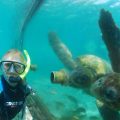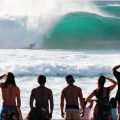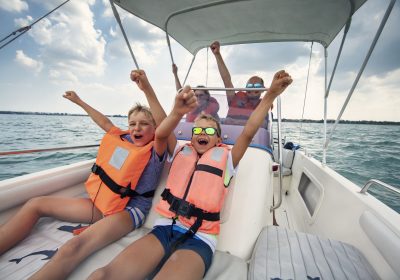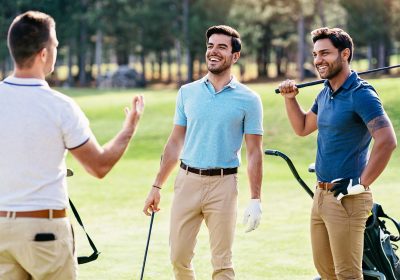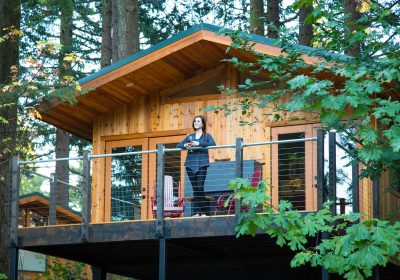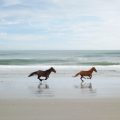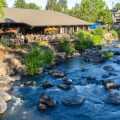Amanda Madorno is an Equine Experiential Learning instructor who teaches people that the most effective communication relies on our non-verbal actions and personal motivations as much as it does rational thought and speaking.
Having been around horses all of her life, Madorno operates the corporate leadership training company Roam Consulting, based at a quiet ranch outside Seattle. She works with corporate groups and individuals in her horse arena to show them how to better interact in a business arena.
“Because how we deal with horses is how we deal with people,” says Madorno. “Horses are this incredible metaphor for leaders and leadership based on themes revolving around partnership, relationship, trust and communication.”
Roam Consulting offers many different programs ranging from a few hours to multiple days. For beginners who haven’t spent much time with horses, sessions include seemingly simple activities like putting a bridle on a horse and leading it through an obstacle course. For some people, it isn’t that simple at all.
When people have difficulty getting a horse to do something they want it to do, it stems from a lack of trust on the horse’s part. By teaching people how to get the horse to trust them and follow their directions, Madorno is teaching people how to be leaders without using words. By taking away speech, because horses don’t respond to speech, the participants are forced to work together as a team to communicate with the horse on a more visceral, holistic level.
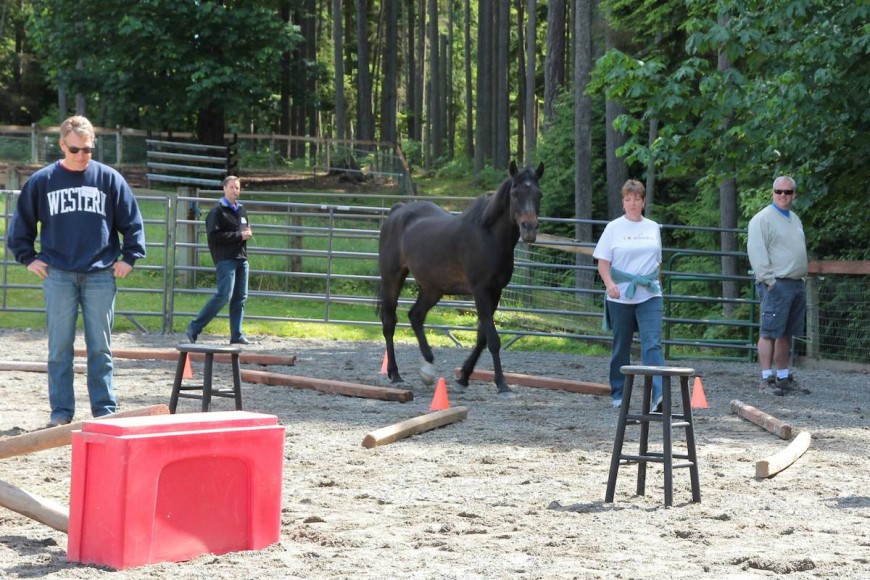
That’s the central theme at Roam Consulting. Madorno says when we’re aware of how our “mind, heart and gut are aligned,” we communicate more effectively and inspire more trust in our audience.
Janene Varden, director of sales/marketing at Willows Lodge in Woodinville, just outside Seattle, brought her team to Roam to participate in the leadership training. Many guests of Willow Lodge have participated in the Roam program.
“We tried and failed miserably the first time, but we all remained open-minded and kept listening to each other to eventually get the job done,” laughs Varden. “It think the takeaways were, first, the importance of working as a team. Second, we also learned something about ourselves and our fears. It was eye opening to see how and why we reacted in certain ways, because you know, those horses have an agenda of their own.”
We spoke to Madorno to better understand what else people can learn from interacting with horses.
Mosaic Traveler: What is it about this type of interaction with horses that can’t be duplicated elsewhere?
Amanda Madorno: There are some powerful reasons why this works, and one of them is that it’s experiential. Experiential learning is one of the most effective ways to learn. It’s what I call a “whole body experience” putting together what we think, how we feel, and why we want something in order to accomplish a specific goal. People get things quicker when they get it in their bodies. That’s when the learning sticks.
Mosaic Traveler: What do the horses bring to the equation?
Madorno: The thing about experiential learning with horses that’s different from any other kind of experiential learning opportunity, like a ropes course or build-a-bike scenario, is that you’re interacting with a sentient being. It’s not an inanimate object so you get feedback very differently. And how horses communicate socially with each other is very similar to how we communicate in teams.
The metaphor of the horse in terms of its power and its size, is they’re kind of hard to move. So if you are being ineffective with getting a horse to move somewhere, they’ll lose interest, they’ll eat grass, they’ll go check out their neighbor, maybe another human being in the arena.
But when you are communicating in a powerful way, when your intention and your focus match your body—when your whole body and intent are aligned—the horse gets it. He will literally do anything for you, and you do not need to have any training to accomplish incredible things with the horses in the arena.
If you know what you want, if you’re connected to the horse and you ask him the right way, he’ll follow you. And that’s a pretty amazing experience for leaders.
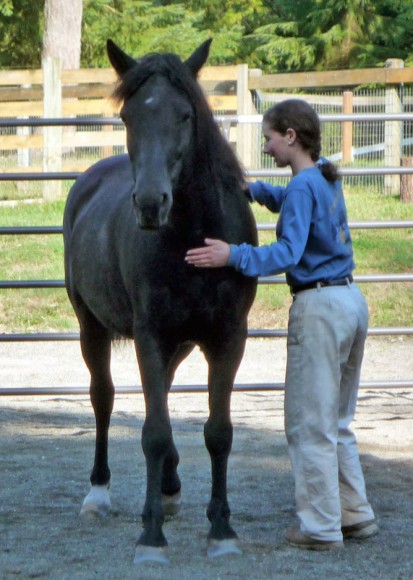
Mosaic Traveler: So how do you align your body and intention?
Madorno: Your energy, posture and purpose must all be taken into account. We like to say that horses help you lead with poise, power and presence. It’s that alignment that I call “whole body communication,” where you are really looking at what’s happening non-verbally. You’re looking at what’s happening for you emotionally. And you’re putting it together with your rational function. Too often we disassociate those things. We only use our words, we only use our head.
I’ll put teams with the horses and ask them to do things silently, and they will sometimes struggle to accomplish something. But I know they’re thinking that if they could talk it will be easier. So I give them an opportunity to do it again with talking, and then they realize that it doesn’t make it any easier.
Mosaic Traveler: What do groups do with the horses in the arena?
Madorno: There are many different things. One of the most popular, I’ll work one-on-one or with teams doing leader exercises called “Who’s Leading Who?” It’s about learning how you lead. Are you using force, are you pushing, are you pulling or are you being dragged?
Or is the way you’re showing up an invitation to join you? And follow you wherever you go through cooperation and partnership so we can start to accomplish an objective together.
One exercise is called “Catch and Lead.” People have to go into the arena, catch a horse and lead it somewhere. An important part of experiential learning is not giving too many directions to see how people use their problem-solving and teamwork skills. And how are they using their decision-making skills about when they need to ask for help and when they don’t?
Mosaic Traveler: What do people need to understand to catch and lead a horse?
Madorno: They need to pay attention to what happens when the horse gives them feedback. Do they listen to what the horse is trying to tell them? So we’ll give them the halter and they have to get it on the horse. Now, horses will often try and help them out. A team will walk up to a horse, and the horse will literally drop its nose so they can put on the halter.
But they often don’t see that. So the learning is: Are you paying attention to what the horse is communicating to you? We as leaders miss a lot of that. We don’t pay enough attention to that, as much as we should.
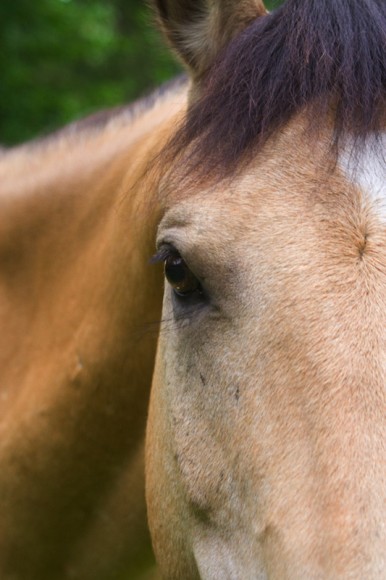 Mosaic Traveler: What is the horse thinking during all of this?
Mosaic Traveler: What is the horse thinking during all of this?
Madorno: The horses are reading what you’re doing, they can smell your emotions. They have amazing emotional intelligence. They read all of the signals, and the thing they rely on the least is the verbal communication. Horses can learn to understand what your saying, but what they’re really paying attention to is what you’re not saying.
And so people start to get those “aha” moments, when the horse moves away and when it comes closer. So what’s going on there? Are the people so adamantly focused on how they have to catch the horse that the horse is like, “I don’t want to be with you.” So, modulating your energy and paying attention to what you’re doing non-verbally gives you insights into how you interact with your teams. What you do with horses you do with people.
Mosaic Traveler: So sometimes we’re too aggressive trying to get what we want and it backfires?
Madorno: They use too much intensity, more than I would say aggression. They refuse to listen. They actually don’t listen. And they rely on old ways of solving problems that aren’t going to work in this situation. Then they realize that the most powerful reason for when and why they’re successful is based on how they show up and who they are.
When they get connected, they can just look at a horse and say, “I want to be with you” in their mind, and that horse will come over to them. When that happens they’re very surprised, and they get it when it works because they know what they did differently. From that point, a horse will walk with them, a horse will trot with them, a horse will dance with them.
Horses seek out leaders naturally. Every horse wants a leader because leaders keep them safe in the herd. But most importantly they want a leader they can respect, who also treats them with kindness and respect.


